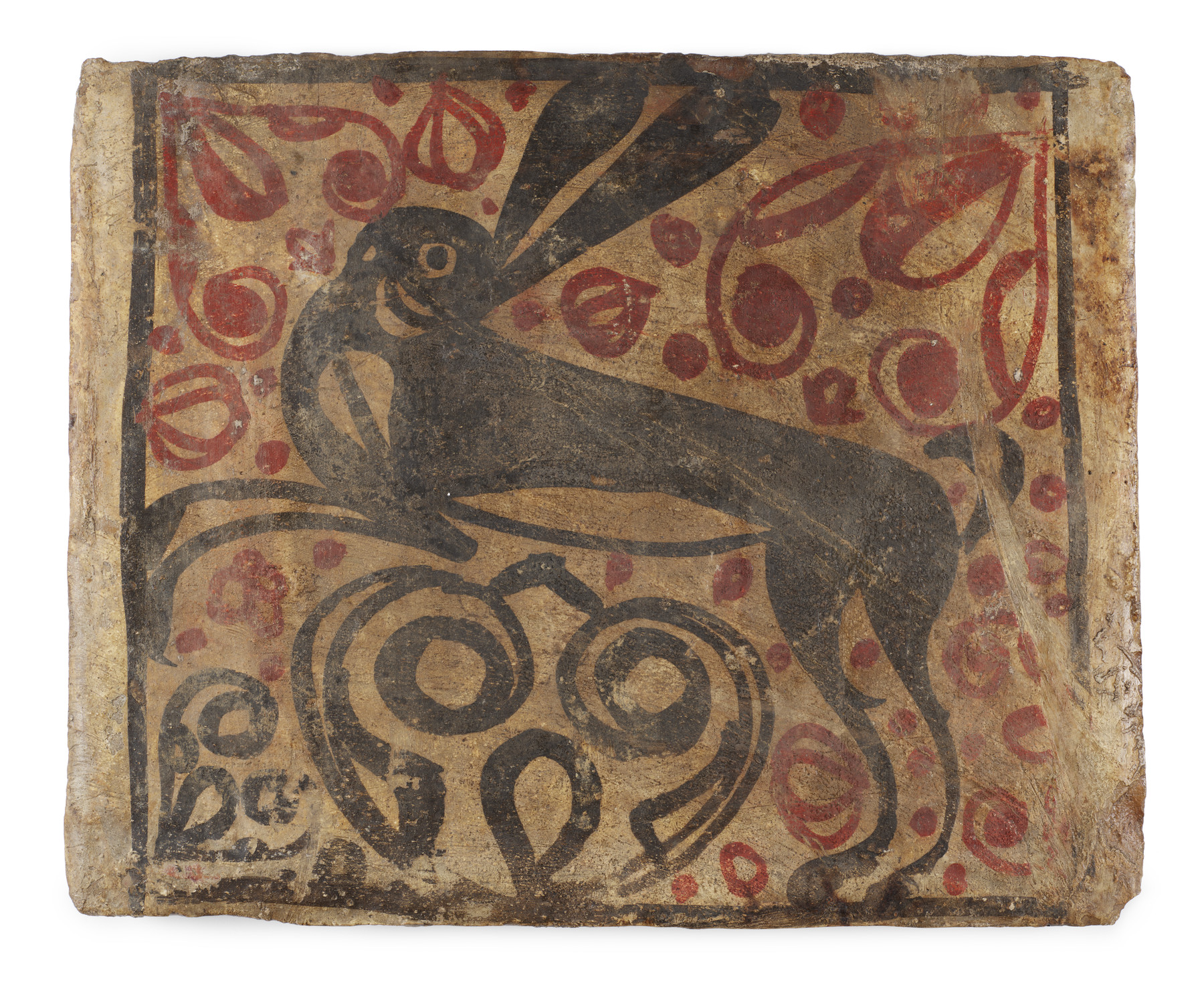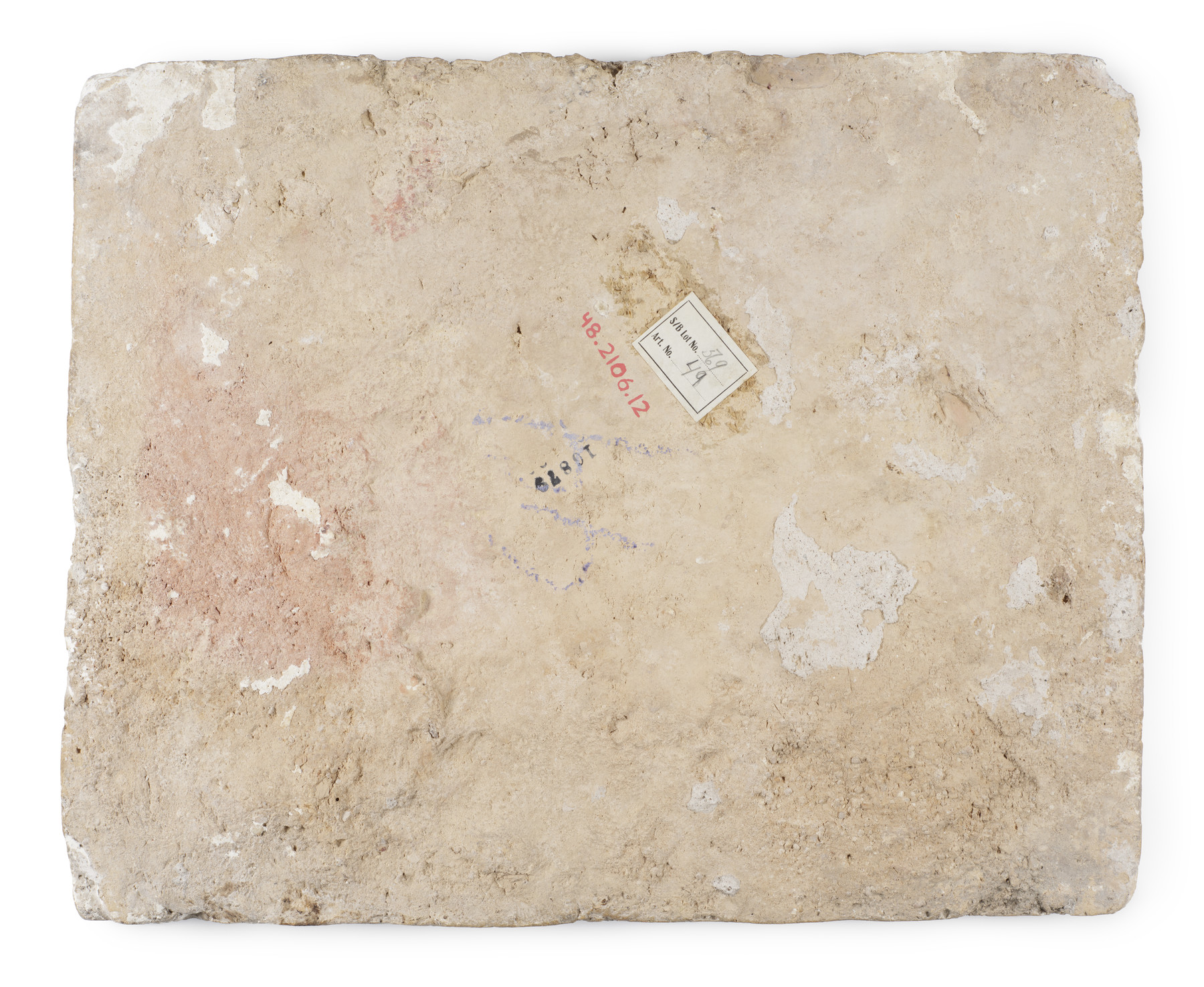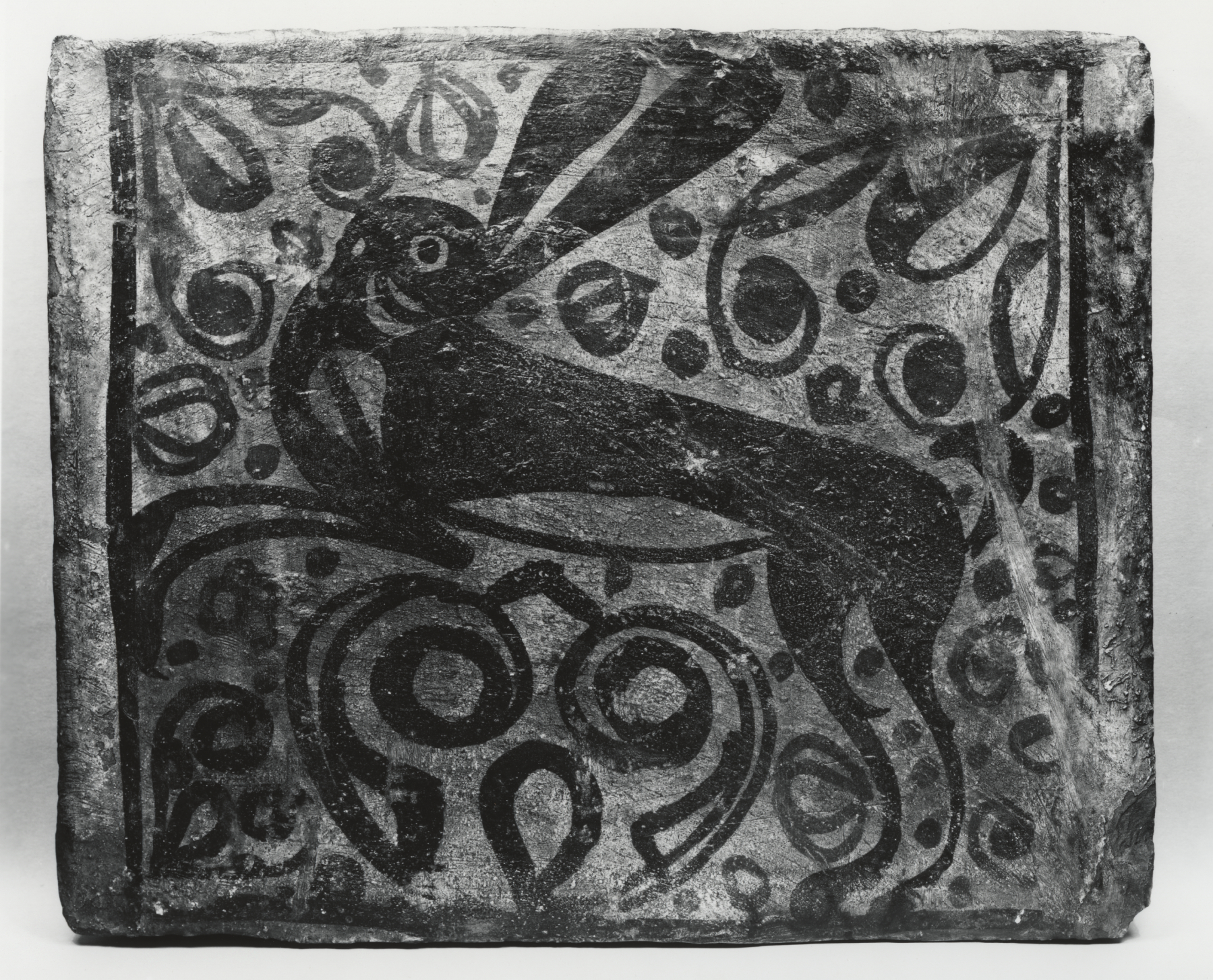Ceiling Tile (socarrat) with a Hare
(Renaissance Europe )
As duke of Segorbe after 1478, Spanish Crown Prince Enrique de Aragon y Sicilia (1445-1522) was also lord of the nearby towns of Paterna and Manises, centers of flourishing ceramic manufacture, from the taxation of which he derived handsome profit. The residence of the duke's representative in Paterna was appropriately known as the "Tax House" (Casa del Delme). Some two hundred ceiling tiles, this one possibly among them, decorated the building until they were sold and dispersed in 1924. The rabbit on it refers to hunting, a pastime reserved for aristocrats.
Provenance
Provenance (from the French provenir, 'to come from/forth') is the chronology of the ownership, custody, or location of a historical object. Learn more about provenance at the Walters.
Casa del Delme (?), 13 calle Mayor, Paterna; Sale, 1924 (?); William R. Hearst, San Simeon, California, ca. 1930, by purchase; Hearst estate, 1951, by bequest [inv. 2597, lot s/b 569, no. 49]; Walters Art Museum, 1958, by purchase.
Exhibitions
| 2008-2009 | Realms of Faith: Medieval and Byzantine Art from the Walters Art Museum. Museum of Biblical Art, New York; Colby College Museum of Art, Waterville; Joslyn Art Museum, Omaha. |
Geographies
Spain, Paterna (Place of Origin)
Measurements
H: 13 15/16 x W: 17 1/4 x D: 1 3/16 in. (35.4 x 43.8 x 3 cm)
Credit Line
Museum purchase, 1958
Location in Museum
Not on view
Accession Number
In libraries, galleries, museums, and archives, an accession number is a unique identifier assigned to each object in the collection.
In libraries, galleries, museums, and archives, an accession number is a unique identifier assigned to each object in the collection.
48.2106.12






